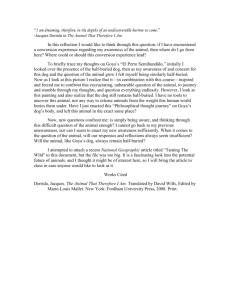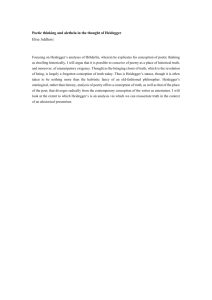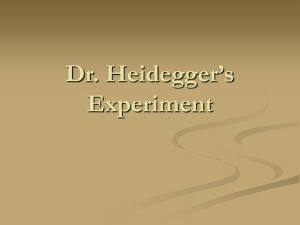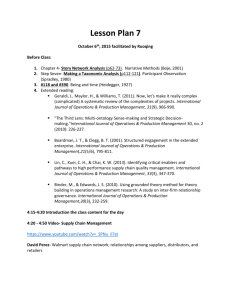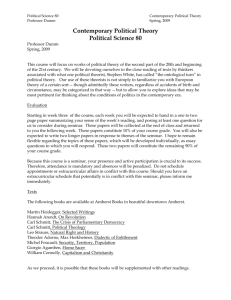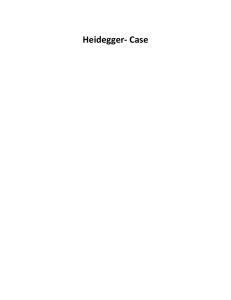Paddock Half Buried
advertisement
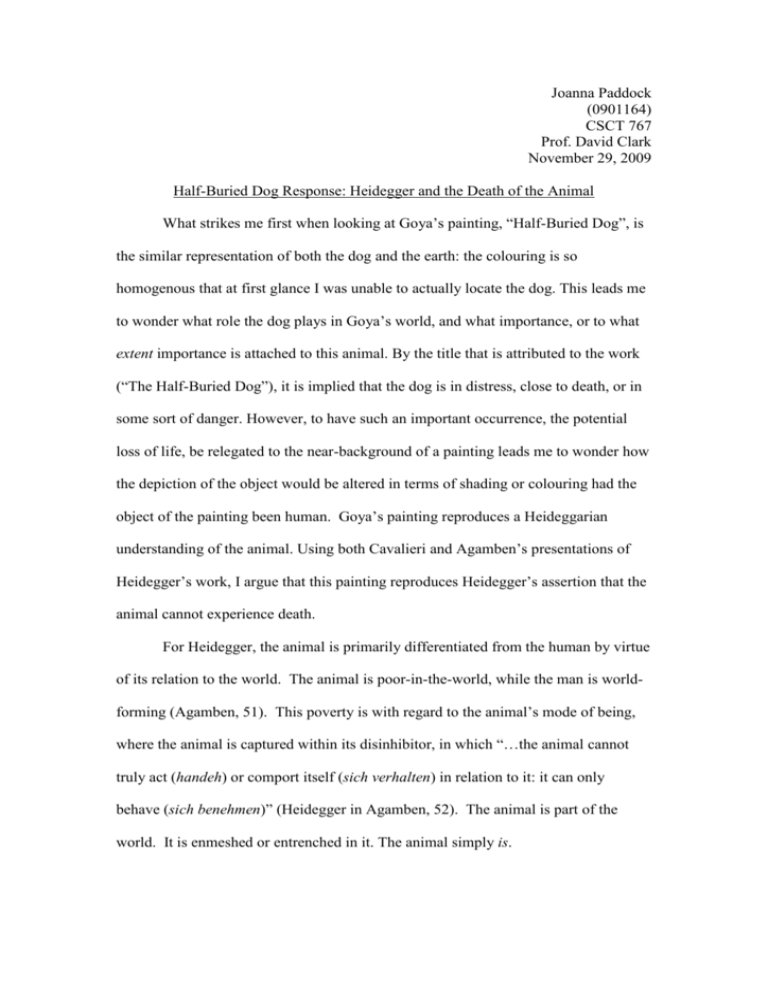
Joanna Paddock (0901164) CSCT 767 Prof. David Clark November 29, 2009 Half-Buried Dog Response: Heidegger and the Death of the Animal What strikes me first when looking at Goya’s painting, “Half-Buried Dog”, is the similar representation of both the dog and the earth: the colouring is so homogenous that at first glance I was unable to actually locate the dog. This leads me to wonder what role the dog plays in Goya’s world, and what importance, or to what extent importance is attached to this animal. By the title that is attributed to the work (“The Half-Buried Dog”), it is implied that the dog is in distress, close to death, or in some sort of danger. However, to have such an important occurrence, the potential loss of life, be relegated to the near-background of a painting leads me to wonder how the depiction of the object would be altered in terms of shading or colouring had the object of the painting been human. Goya’s painting reproduces a Heideggarian understanding of the animal. Using both Cavalieri and Agamben’s presentations of Heidegger’s work, I argue that this painting reproduces Heidegger’s assertion that the animal cannot experience death. For Heidegger, the animal is primarily differentiated from the human by virtue of its relation to the world. The animal is poor-in-the-world, while the man is worldforming (Agamben, 51). This poverty is with regard to the animal’s mode of being, where the animal is captured within its disinhibitor, in which “…the animal cannot truly act (handeh) or comport itself (sich verhalten) in relation to it: it can only behave (sich benehmen)” (Heidegger in Agamben, 52). The animal is part of the world. It is enmeshed or entrenched in it. The animal simply is. This understanding of the animal has important implications for Heidegger’s dismissal of the possibility of an animal’s death. If the animal merely exists within its environment, he says, it does not experience death, but merely perishes (Cavalieri, 11). The death of an animal is thus nothing more than another event in nature, unextraodinary and uninteresting. Through the representation of the animal as being homogenous to the world surrounding it, Goya’s painting reinforces Heidegger’s assertion that the animal is captive within its environment, which removes the significance of its death. Works Cited Agamben, Giorgio. The Open: Man and Animal. Trans. Kevin Attell. Stanford: Stanford University Press, 2004. Print. Cavalieri, Paola. The Death of the Animal: A Dialogue. New York: Columbia University Press, 2009. Print.
